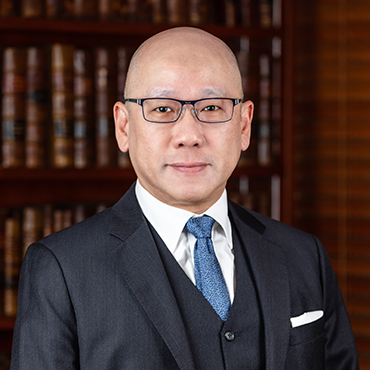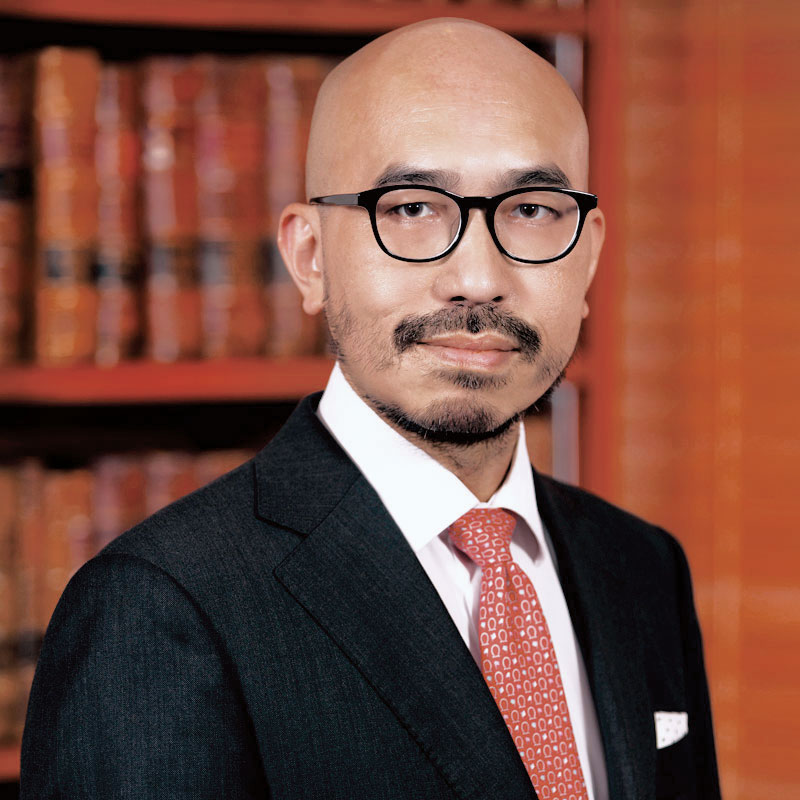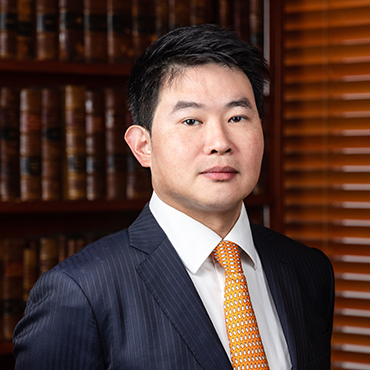HKSAR v Cheung King Sang Kinson [2024] 5 HKLRD 501, [2024] HKCA 1013 (Robert Pang SC, Steven Kwan, Albert Wong)
Robert Pang SC and Yvonne Leung represented the 1st applicant, and Steven Kwan and Albert Wong represented the 3rd applicant in HKSAR v Cheung King Sang Kinson [2024] 5 HKLRD 501, [2024] HKCA 1013.
On 1 July 2021, there were online appeals for protests on Hong Kong Island. When police were deployed in response outside a department store in Causeway Bay, a man (L) suddenly approached a police officer from behind and stabbed his back with a sabre knife causing serious injury, then killed himself by stabbing (the Incident). The Government publicly condemned violence and acts undermining public order, characterising the Incident as a “lone-wolf terrorist attack”. D1-4 (Ds) were members of the Hong Kong University Students’ Union Council (the HKUSUC) of the University of Hong Kong (the HKU). An emergency council meeting was convened to discuss the Incident (the Meeting), which was filmed and broadcasted live on social media. D1 as chairperson opened the Meeting by inviting the HKUSUC to “rise and observe a minute of silence” to “remember the honourable sacrifice” of L. With D2 as the proposer and D3 as the seconder, D1 put to vote the motion for the HKUSUC to express its deep sadness in L’s death, offer its sympathy and condolences to his family and friends, and appreciate his sacrifice to Hong Kong (the Motion). D4 spoke in support of the Motion, which was passed and became a resolution of the HKUSUC (the Resolution). Following condemnation by the Government and the HKU, an apology was issued by the Hong Kong University Students’ Union and another emergency meeting was convened at which the Motion and the Resolution were rescinded. Ds were subsequently arrested and faced two charges. Charge 1 was advocating terrorism, contrary to art.27 of the Law of the People’s Republic of China on Safeguarding National Security in the Hong Kong Special Administrative Region (the NSL). Charge 2, as an alternative charge, was incitement to wound with intent, contrary to common law, s.17(a) of the Offences against the Person Ordinance (Cap.212) (the OAPO) and punishable by s.101I of the Criminal Procedure Ordinance (Cap.221) (the CPO). Upon Ds’ guilty pleas, which were accepted, they were convicted of Charge 2 whereupon Charge 1 was dismissed. The Judge adopted a starting point of 35 months’ imprisonment, applied a discount of 20% for Ds’ late guilty pleas, and further reduced the sentence by 4 months for other mitigating factors. Ds were each sentenced to a term of 24 months’ imprisonment. Ds applied for leave to appeal against sentence.
Held, granting Ds leave to appeal, allowing the appeals, and substituting each of Ds’ sentences with one of 15 months’ imprisonment, that:
- (1) Incitement to wound with intent was a serious offence. Its maximum sentence was life imprisonment, which was the same as the predicate offence of wounding with intent, pursuant to s.101I of the CPO read together with s.17 of the OAPO. The offence aimed at preventing people from persuading or encouraging others to wound with intent, even if no one so persuaded or encouraged did it; and allowing intervention as early as possible to stop the incited from doing it. The offence was completed once the incitement was made, irrespective of whether the actual crime was carried out or attempted. To achieve those purposes, imposition of sentences intended to provide both punishment and deterrence must follow (Secretary for Justice v Poon Yung Wai [2022] 4 HKLRD 1002 applied). (See para.39.)
- (2) Having evaluated Ds’ overall culpability with regard to the relevant circumstances as set out at para.40 of this judgment, the starting point of 35 months was too high and the proper starting point should be 24 months: (See paras.40-41, 50.)
- (i) Hong Kong had been experiencing an exceptional and sustained outbreak of violent public lawlessness since June 2019 which led to the enactment of the NSL on 30 June 2020. It was against this background and the calls for protests on 1 July 2021 that the police were deployed to maintain public order where the Incident took place. Ds committed Charge 2 just a few days after the widespread media publicity of the Incident. Inciting others to wound the police with intent might again arouse anti-police sentiments. Some might be encouraged to cause harm to the police. Moreover, targeting the police would seriously undermine their efforts to tackle potential threats to public order (Kwok Wing Hang v Chief Executive in Council (2020) 23 HKCFAR 518 considered). (See paras.42-43.)
- (ii) Ds glorified L’s savage attack on the police officer and his suicide as an honourable sacrifice for Hong Kong, to be highly respected and worthy of remembrance as a matter of history and formal record of the HKUSUC, in open defiance of the public condemnations by the Government. Although the incitement was indirect, it was not less serious than a direct incitement. The gravity of an incitement depended on its substance and context, not its form. The implicit message was that resorting to violence against the police, even at the cost of one’s own life, was an honourable course to take to achieve one’s political objectives. Such a dangerous, radical, if not fanatic, idea had to be firmly rejected. That said, this was a one-off incident which did not last long or involve any repeated incitements. The likelihood of the incitement leading others to commit wounding with intent did not appear to be very high. (See para.44.)
- (iii) On the admitted facts, the Judge was entitled to draw the inference that there was a degree of premeditation with Ds playing different roles at the Meeting. However, it did not involve a high degree of sophistication, skill or industry. (See para.45.)
- (iv) Ds were student leaders who committed the offence in their official capacity which they held in the HKUSUC. Their conduct at the Meeting including in particular the passing of the Resolution purported to represent the official stance of the HKUSUC to endorse sheer violence against the police. (See para.46.)
- (v) The Meeting was broadcasted live via the social media platforms of the HKUSUC and its related entities. This was an aggravating factor (Secretary for Justice v Poon Yung Wai [2022] 4 HKLRD 1002 applied). (See para.48.)
- (vi) Since Charge 2 was aimed at local people with the police as the target, the Judge had placed too much weight on the aggravating factor of an international element comprised by the international interest in the Resolution. (See para.49.)
- (vii) The primary audience of the incitement was evidently the students of the HKU. Inciting students to wound the police with intent was an aggravating factor (Secretary for Justice v Wong Chi Fung [2018] 2 HKLRD 699 applied). (See para.50.)
- (3) The extent of reduction for Ds’ youth, and for the retraction which was normally subsumed in the discount for guilty plea, was a matter for the Judge and there was no ground for interfering with her decision to give a further total 4 months’ discount for those factors. The other mitigating factors paled into insignificance in face of an offence as serious as Charge 2. Any criticism that the Judge failed to give any further discount for them must fail (HKSAR v Ngo Van Nam [2016] 5 HKLRD 1 considered). (See paras.52, 57-59.)
- (4) In the premises, the proper sentence should start with 24 months, to be discounted by 20%, further reduced by 4 months and rounded up to 15 months’ imprisonment. (See para.60.)
[The above is excerpted from the headnote to the report in HKLRD.]




